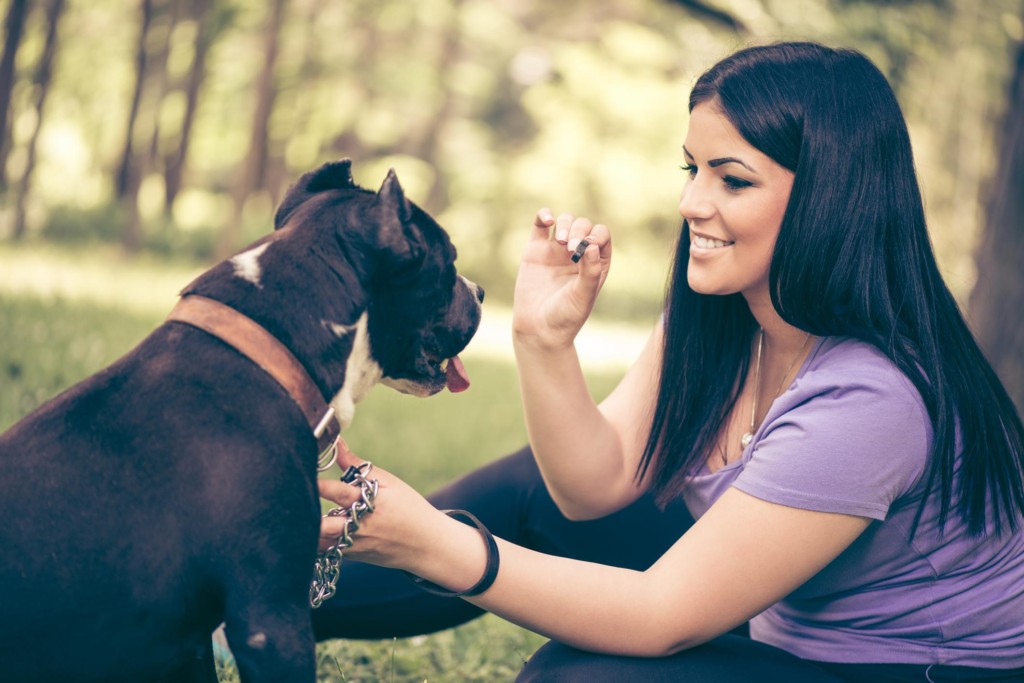It’s undeniable: whether they’re big, small, young or old, all dogs love treats. They love them so much that they’re happy to do whatever we say in order to get one – from sitting, to staying to rolling over or shaking our hand. That’s why they make such good training tools. And, seeing a dog’s tail spring into action at the sight of a treat is enough for us to keep feeding them treat after treat after treat. And yet, many of us aren’t really sure what’s in treats and why they have such a strong effect on dogs.
Here are some answers to common treat-related questions:
What are dog treats made from?
They’re much like the human treats you’ll find if you take a stroll through the lolly section of the supermarket. Dog treats contain many different ingredients and are designed in labs by scientists, whose job is to make them taste as addictive as possible so that dogs love them and want more and more, which in turn makes their owners keep buying their product.
Here are some common ingredients in dog treats:
Mystery meat
- Unless the label explicitly says otherwise, it’s likely that your dog’s treats contain a big mix of animal bi-products. From pig hooves to bull tongues, private parts and everything in between, you can never be sure exactly which animals and which part of them the meat comes from.
Filler products
- Surprisingly, a lot of the ingredients found in dog treats are not actually meat, but cheap filling products like corn-starch or gluten that add bulk and texture to the to the treat. According to WebMD, this isn’t necessary in a dog’s diet.
Preservatives
- Preservatives and chemicals are put into dog treats to help them keep their texture and to keep them fresh for as long as possible. A lot of the chemicals in these treats would never be found in human food as they have been linked to cancer in humans. Sometimes, colours and dyes are even used to make the products seem more appealing to people, who will in turn be more likely to buy the product for their dogs if they think they look appetising for their pets.
Sugar and syrups
- These ingredients are used to create addictively sweet flavours and have the same effect on dogs as they do on humans: hyperactivity, obesity, diabetes and dental problems.
Where should these products fit into my dog’s diet?
According to experts you can still give your dogs treats; as long as you make sure they are taking up less than 10% of their diet.
If you want to work out exactly how much your dog should be consuming, contact your vet. Just as with their normal, everyday food, the amount of treats a dog should be consuming depends on their size, breed age and weight.
What are some substitutes to packaged dog treats?
How fussy is your dog when it comes to treats? It may be worth checking whether they have an equally positive reaction to a carrot stick than they do to a fatty treat. Try out a couple of foods to test what they like. Some dog owners use banana, apple, cucumber, peanut butter or even broccoli.
If they’re willing to take a healthy reward instead of something that’s bad for them, why not pick the healthier option?
Make sure you avoid potentially toxic foods such as anything caffeinated, chocolate, onions, raisons, grapes or foods with too much spice. The general rule, is to make sure the food you feed a dog is as plain as what you’d give a toddler.
Also ask yourself: does my dog really deserve a treat right now, or am I just doing this to make him or her feel happy? If the answer is no, praise them verbally, or with a pat or a tickle instead









